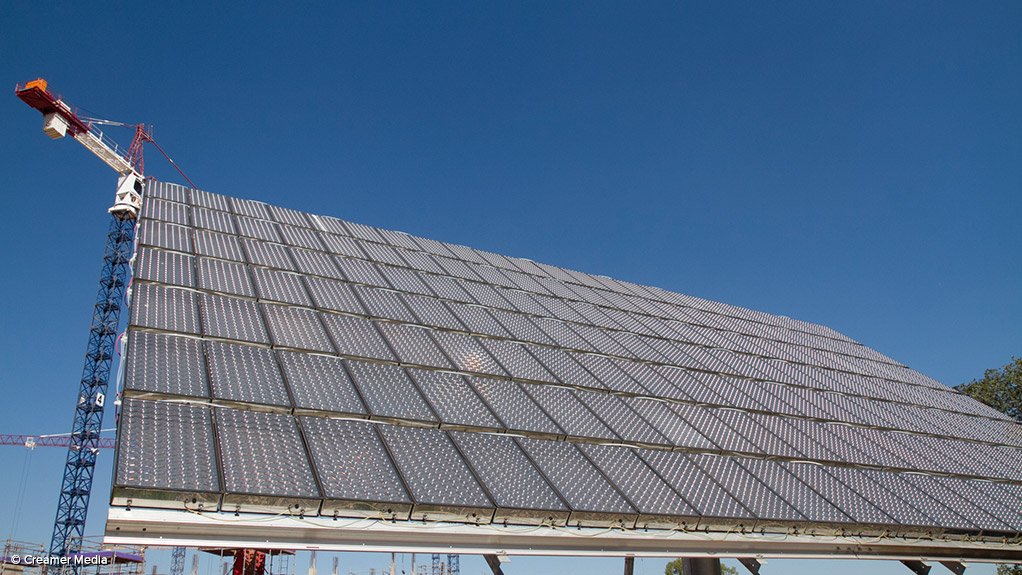A new report published on Friday by industry associations has revealed that the cost premium of building “green” was only an average of 5% above the construction of traditional buildings, much less than previously thought.
The first edition of the ‘Green Building in South Africa: Guide to Costs and Trends’ report showed green building premium costs for 4-Star-, 5-Star- and 6-Star-rated office blocks varying between 1.1% and 14.2%.
The survey was compiled by the Green Building Council of South Africa (GBCSA), the Association of South African Quantity Surveyors and the University of Pretoria (UP) to provide solid data for analysis on the actual cost premium of building green in South Africa.
Unpacking the report at a business breakfast in Midrand, on Friday, UP researcher and quantity surveying programme leader Danie Hoffman said that, with no credible, readily available data, there was a lingering perception of significant cost premiums on building green offices.
GBCSA chief technical officer Manfred Braune added that, particularly in the early years, there was a global, now-dispelled, perception that green buildings cost 20% to 50% more than conventional buildings.
“The findings of this study for the first time show that green buildings can be built for a negligible premium – and that this premium is declining,” he said.
Cost data analysis of 54 Green Star South Africa- (SA-) rated office buildings – 33 in Gauteng, 11 in the Western Cape and 9 in KwaZulu-Natal – certified through the GBCSA Office v1 tool from 2007 until 2014, showed green cost premiums declining progressively over time, particularly since 2011, indicating that South Africa’s green industry was maturing.
The country had a well-established commercial green building market and, if its current commitment to green activity continues, the country could be a leader in the global green market in the next three years.
The study analysed the green design and green cost penetration in terms of location, construction area, base building cost, tenant mix, vertical façade and construction area ratio, in addition to Green Star SA rating levels, Design or As Built and the certification date.
The green cost penetration indicated that 4-Star office buildings came at a premium of between 1.1% and 14.2%, with an average of 4.5%, while 5-Star rated buildings premium was between 2% and 11.7%, with an average of 6.6%.
Six-Star rated buildings were at a premium of between 10.2% and 11.7%.
The report also found that there was a variance in the average costs based on location, with average premiums of 6.9%, 6% and 4.5% on buildings in the Western Cape, Gauteng and KwaZulu-Natal respectively.
The same trend could be seen on the amount of the budget injected into the green elements of a green project, or the green design penetration, which showed the Western Cape at 46%, Gauteng at 41.8% and KwaZulu-Natal at 40.4%.
Overall, an average green design penetration of 42.7% of the total project budget was reported; however, it varied from a low of 17.6% to a high of 73.5%, and was mostly allocated to the energy and indoor environment quality tools of the Office v1.
Further, construction area had a significant impact on green building costs, with costs dropping from 9.3% for a building under 5 000 m2 to 2.6% for buildings over 50 000 m2.
“Economies of scale also result in larger developments having higher efficiency levels and lower building costs per square metre of installations such as lifts, escalators or air conditioning systems,” Hoffman commented.
This showed that larger building projects had the funds for additional green building initiatives more readily compared with a building at the same specification but half the size.
Edited by: Creamer Media Reporter
EMAIL THIS ARTICLE SAVE THIS ARTICLE
To subscribe email subscriptions@creamermedia.co.za or click here
To advertise email advertising@creamermedia.co.za or click here













